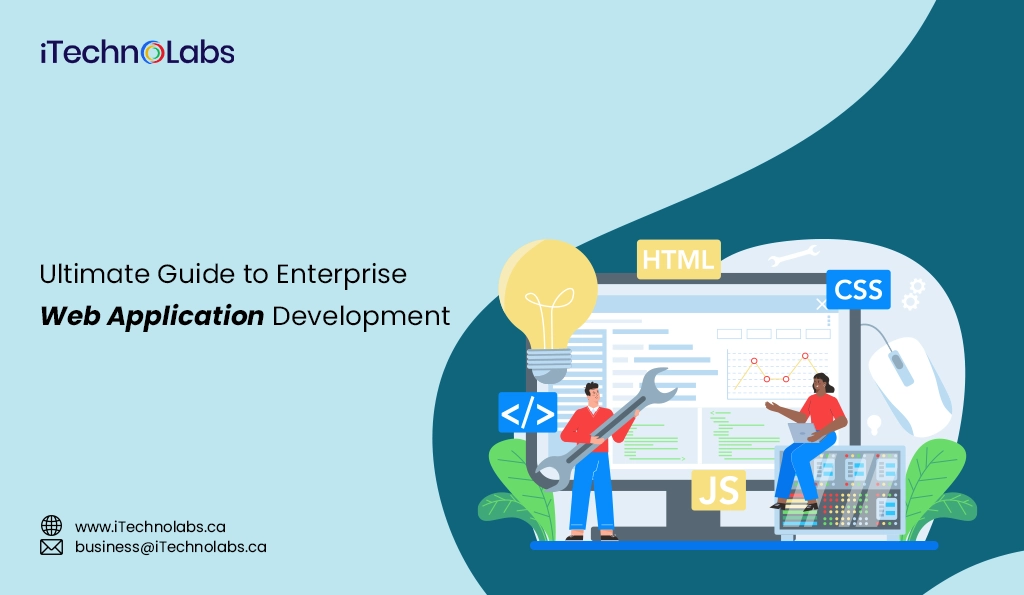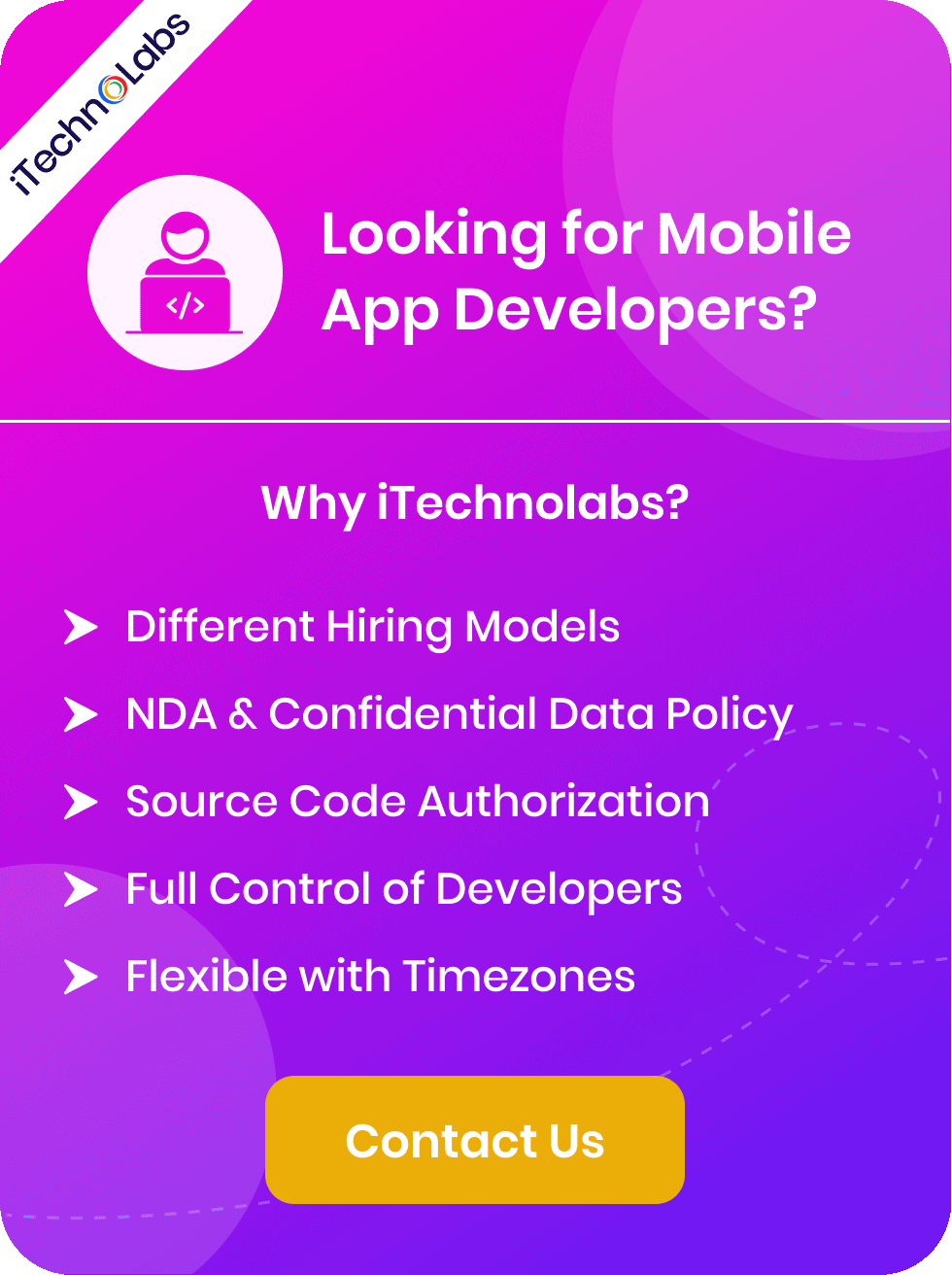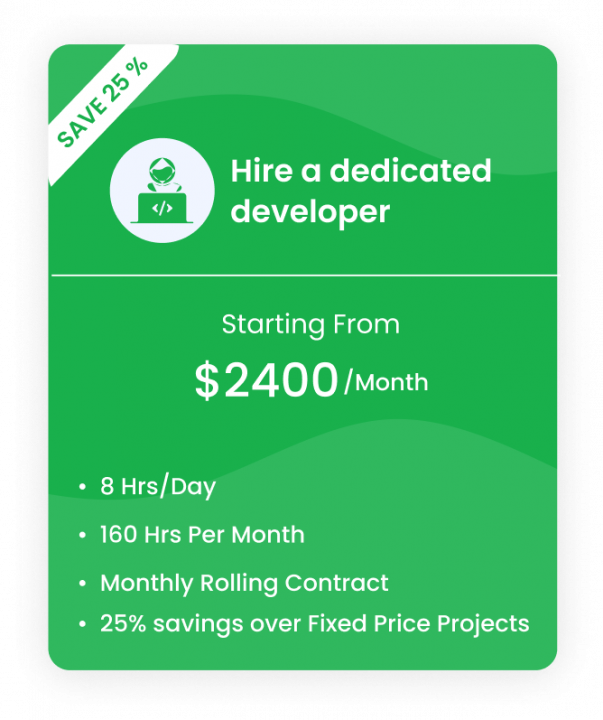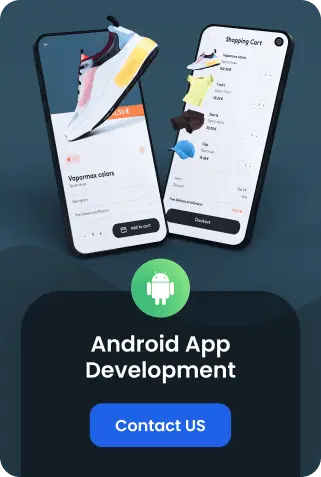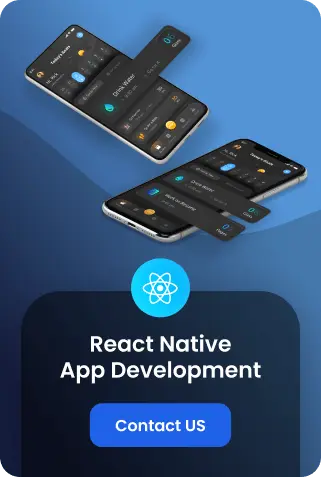Overview
Enterprise web application development is a highly complex and multidisciplinary endeavor that encompasses the designing, developing, testing, and deploying of large-scale software solutions tailored for businesses. This intricate process demands a profound understanding of both the technical intricacies and the business strategies to craft a successful product that aligns with the requirements and expectations of all stakeholders involved.
Throughout this comprehensive guide, we will delve into the key steps integral to the process of enterprise web application development. We will explore the initial stages of conceptualization and planning, where the foundation of the project is laid out, and the specific goals and functionalities of the application are defined. Following this, we will discuss the intricate phases of designing both the user interface and the underlying architecture, ensuring a balance between aesthetic appeal and robust functionality.
Moreover, we will examine the critical stages of development and testing, where the application is brought to life and rigorously evaluated to iron out any bugs or issues. This phase is crucial for ensuring the reliability and performance of the application under various conditions. Additionally, we will look into the deployment phase, where the application is launched and made accessible to users, and the ongoing maintenance that follows to address any emerging needs or challenges.
In terms of costs, this guide will provide insights into budgeting for the entire lifecycle of enterprise web application development, from initial research and design to long-term support and updates. We will outline the costs associated with each stage and offer strategies for managing expenses effectively.
Furthermore, we will discuss the typical timelines for completing a project, highlighting how factors such as project scope, complexity, and resource availability can influence the development schedule.
What is an Enterprise Web Application?
An enterprise web application is a sophisticated software program meticulously engineered for organizations aiming to streamline, optimize, and effectively manage their myriad business processes. Characteristically, it operates within a web browser, enabling a seamless and accessible experience for employees, customers, partners, or any authorized users, regardless of their location, as long as they have a stable internet connection.
These applications stand out for their high degree of customizability and adaptability, designed from the ground up to cater to the unique requirements and challenges of a specific business. This bespoke nature ensures that every feature and functionality adds tangible value, directly aligning with the organization’s objectives and operational workflows.
Furthermore, enterprise web applications are renowned for their capacity to integrate fluidly with existing systems and databases within the organization’s ecosystem. This integration facilitates a unified platform that not only simplifies data management and analysis but also enhances decision-making processes by providing comprehensive insights and real-time data. By acting as a centralized nexus for all business operations, these applications significantly contribute to improved efficiency, productivity, and ultimately, profitability.
Follow the Easy 5-Step Process for Enterprise Web Application Development
Building an enterprise web application is no easy feat, and as such, it requires a well-defined process to ensure a successful outcome. Here are the five key steps typically followed by software development teams when creating enterprise web applications:
Step 1. Plan and Gather Your Project Requirements
The initial and paramount phase in the software development cycle is the identification and collection of all essential project requirements. This critical step encompasses a comprehensive understanding of the business goals, pinpointing the targeted user demographic, eliciting detailed user stories, and delineating precise technical specifications. To achieve a thorough and holistic view, it is imperative to engage key stakeholders from various departments across the organization, such as marketing, sales, customer support, and IT. Involving these diverse perspectives ensures that the software developed aligns closely with the organization’s broader objectives and addresses the needs and pain points of all potential users effectively. This collaborative approach not only enriches the development process but also significantly enhances the chances of the project’s success by making sure every facet of the project requirements is meticulously examined and integrated into the planning and execution phases.
Step 2. Contact an Enterprise Web Development Company
Once the project requirements have been identified and documented, the next crucial step is to select a competent enterprise web development company that has the requisite experience, technical expertise, and proven track record to bring your vision to life. Conduct thorough research into potential companies and evaluate their past projects, client reviews, and areas of specialization. Consider scheduling meetings with a few shortlisted candidates to discuss your project requirements and gauge their understanding, approach, and proposed solutions. Additionally, ensure that the chosen company has a transparent communication structure in place, efficient project management processes, and a strong commitment to meeting deadlines.
Step 3. Create the Design and Architecture of your Application
Once you have selected an enterprise web development company, the next step is to work closely with their design and architecture team to create a comprehensive design and architecture plan for your application. This typically involves wireframing, prototyping, and creating mockups of different pages and features to visualize how the final product will look and function. The development team should take into account factors such as user experience, scalability, and security while designing the application. It is also essential to keep your stakeholders involved in this process to ensure that their feedback is incorporated into the design.
Step 4. Develop the Front-end and Back-end of Your Web App
With a comprehensive design and architecture plan firmly established, the pathway is cleared for the development process to commence. The front-end of your web application is essentially the customer-facing aspect, encompassing the overall design, layout, and the array of features that users interact with directly. It’s imperative for this segment to not only be visually attractive but also user-friendly and responsive, ensuring a seamless experience across various devices and web browsers. This involves meticulous attention to detail in the choice of colors, fonts, and interface elements to create an engaging and intuitive user experience.
On the flip side, the back-end of your web application represents the server-side technologies that operate behind the scenes to support the front-end. It’s responsible for managing data storage, upholding security measures, and handling the application logic. This component is the backbone of your web app, tasked with processing user requests, executing application commands, and managing database interactions. For a web application to be successful, it’s essential to have a robust and scalable back-end architecture capable of handling high volumes of traffic, providing secure and efficient access to data, and ensuring the overall smooth functionality of the app.
Step 5. Test, Deploy, and Maintain Your Web Application
Once the development phase is completed, the next step involves rigorous testing to find and fix any bugs or glitches. This process ensures that your web application is functioning as intended and can handle expected and unexpected user actions without crashing or compromising data integrity. It’s crucial to conduct thorough testing across various devices, browsers, and platforms to ensure a high-quality product.
After successful testing, the web application is ready for deployment to a hosting server. There are various options for hosting, such as using a dedicated server or opting for cloud hosting services. Whichever option you choose, it’s important to ensure that the server can handle your application’s needs in terms of storage, bandwidth, security, and scalability.
Also Read: A Comprehensive Guide: Custom Web Application Development
6 Advanced Features to Integrate Into Enterprise Web Application
| Feature | Description |
| 1. Artificial Intelligence (AI) and Machine Learning (ML) | Integrate AI and ML algorithms to automate processes, personalize user experiences, and analyze data for insights. |
| 2. Blockchain Technology | Implement blockchain for enhanced security, transparent transactions, and reduced fraud in your web applications. |
| 3. Internet of Things (IoT) Integration | Connect your web application with IoT devices to monitor data and manage devices in real-time for improved operational efficiency. |
| 4. Advanced Analytics and Reporting Tools | Use advanced analytics to provide users with detailed reports, predictive analysis, and actionable insights. |
| 5. Cloud Integration | Leverage cloud services for scalable storage, improved performance, and enhanced collaboration capabilities |
| 6. Progressive Web App (PWA) Technology | Employ PWA technology to ensure your web application is mobile-friendly, works offline, and loads quickly across all platforms. |
Technology Stack Used in Developing Enterprise Web Applications
When developing an enterprise web application, the technology stack is a crucial factor to consider. It refers to the set of technologies used in building and running the application. Here are some common components that make up a technology stack for enterprise web applications:
Technology Stack Components
| Component | Description |
| Frontend (Client Side) | Technologies like HTML, CSS, and JavaScript, along with frameworks such as React, Angular, or Vue.js, are used for the interface and user experience layer. |
| Backend (Server Side) | Server-side languages like Java, .NET, Python, or Node.js are used for application logic, API services, and handling requests. |
| Database | Relational databases (such as MySQL, PostgreSQL) and NoSQL databases (like MongoDB, Cassandra) store and manage application data |
| DevOps Tools | Tools like Jenkins, Docker, Kubernetes facilitate continuous integration/continuous deployment (CI/CD), containerization, and orchestration. |
| Cloud Providers | AWS, Azure, Google Cloud provide scalable cloud services for hosting, storage, computing, and more. |
| Security Tools | Implementation of security tools like SSL certificates, firewalls, and compliance with security protocols (OWASP, GDPR, etc.) to ensure data protection and privacy. |
| Middleware | Middleware such as RESTful APIs, GraphQL for seamless integration and communication between the frontend, backend, and database layers. |
Read More: Best Framework for Server-Side Application Development
How Much Does It Cost to Develop an Enterprise Web Application?
Estimating the cost of developing an enterprise web application is a complex process that can vary significantly based on several key factors, including the application’s complexity, scale, and the specific needs of the business it’s being developed for. On the lower end of the spectrum, a basic enterprise web application, which might include standard functionalities suitable for small to medium-sized businesses, can start from a price range of $20,000 to $50,000. This cost estimate typically covers the development of core features without extensive customization or advanced technical requirements.
However, for businesses requiring more sophisticated applications, especially those that need custom development to meet unique operational needs, advanced security measures to protect sensitive data, and seamless integration with existing systems and databases, the costs can escalate significantly. These more complex projects can range from $50,000 to $500,000 or even more, depending on the depth of customization and the level of technical sophistication required. For instance, applications that facilitate real-time data processing, incorporate artificial intelligence, or require high levels of user interaction through custom interfaces will be on the higher end of this cost range.
In addition to the initial development cost, businesses must also consider the total cost of ownership over the application’s lifecycle. This includes ongoing maintenance to ensure the application remains functional and secure, updates to add new features or adapt to changing business needs and scaling costs to accommodate growing user numbers or data volumes. These ongoing costs could account for approximately 15-20% of the initial development cost annually, which is a significant consideration for long-term budgeting and planning.
Suggested: How Much Does it Cost to Create An App
How Much Time Does It Take to Develop an Enterprise Web Application?
The time required to develop an enterprise web application can vary greatly depending on the complexity of the project and the resources available. Generally, a standard web application with core features can take anywhere from 3-6 months to develop, while more complex projects may take up to a year or longer.
Factors that can impact development time include:
- Project scope and requirements: The more features and functionality required, the longer it will take to develop.
- Technical complexity: Custom integrations, complex data processing, and advanced user interfaces can add significant development time.
- Team size and resources: The larger the team working on the project, the faster it may be completed. However, having too many developers on a project can also lead to communication issues and delays.
- Testing and quality assurance: Proper testing and bug fixing are crucial for a successful web application, but they can also add time to the development process.
- Project management: Efficient project management is essential to keep the project on track and avoid delays. A well-planned strategy and effective communication within the team can significantly impact development time.
Top Enterprise Web Application Examples
Here are some examples of successful enterprise web applications that have been developed and used by companies worldwide:
- Salesforce: This cloud-based CRM application is widely used by businesses to manage customer interactions, sales, and marketing activities.
- Workday: A popular HR management system for medium to large enterprises, with features such as payroll processing, performance evaluation, and employee self-service.
- Zoom: The video conferencing platform has gained widespread popularity, especially during the pandemic, for its ease of use and reliability.
- Microsoft Dynamics 365: This suite of business applications includes tools for sales, marketing, finance, and operations. It offers a customizable and integrated solution for enterprises of all sizes.
- Asana: Used by teams to manage projects and collaborate on tasks, Asana is a popular project management tool for businesses of all sizes.
- Shopify: This e-commerce platform caters to businesses of all sizes, providing a user-friendly interface for creating and managing online stores.
- QuickBooks: A widely used accounting software for small businesses, offering features such as invoicing, expense tracking, and tax calculation.
- Trello: Another popular project management tool that allows teams to organize and track tasks using boards, lists, and cards.
- SAP S/4HANA: This ERP system offers real-time data processing for businesses of any size, with features such as financial management, supply chain operations, and analytics.
- Google Workspace: A suite of productivity tools including Gmail, Docs, Sheets, and Meet that are widely used by enterprises for communication and collaboration.
4 Benefits of Enterprise Web Applications
Enterprise web applications offer several benefits to businesses of all sizes. Here are some of the main advantages:
Saves Cost and Increases Efficiency
Enterprise web applications revolutionize the way businesses operate by eliminating the cumbersome and costly need for hardware and software installations across a multitude of devices. This innovative approach not only enables companies to significantly reduce their financial outlays but also boosts operational efficiency to new heights. Employees gain the flexibility to access vital applications from any device, provided it has an internet connection, thereby enhancing productivity and facilitating a more agile work environment. Moreover, this model drastically reduces the IT department’s workload regarding maintaining and updating individual devices. Instead of laboriously managing each piece of hardware, updates and changes can be deployed centrally through the web application. This not only ensures all employees have access to the latest tools and security patches but also streamlines the IT processes, allowing for a more efficient allocation of resources and a focus on more strategic tasks.
Ensures Seamless Cross-Platform Compatibility
In today’s digital landscape, the diversity of devices and operating systems is expanding at an unprecedented rate. This variety presents a significant challenge for developers and businesses alike, as ensuring that applications operate smoothly across all platforms is now more crucial than ever. The compatibility issue is not just about screen sizes or resolutions; it’s about the fundamental differences in operating systems and the capabilities of various devices, from smartphones and tablets to desktop computers.
Enterprise web applications emerge as a robust solution to this complexity. By designing these applications to be universally compatible, developers can ensure that they work effectively on any device, regardless of its specific hardware specifications or the operating system it runs. This universal compatibility is a game-changer, leading to enhanced accessibility for a broader audience. It guarantees that the application’s functionality and user experience are consistent, whether the user is accessing it from an old smartphone, a high-end desktop, or anything in between.
Offers a High Level of Security
Data security is a top priority for any organization, especially those that deal with sensitive customer information or confidential business data. Enterprise web applications provide multiple layers of security to ensure the protection of critical data and prevent unauthorized access.
Firstly, these applications are usually hosted on secure servers, often using advanced encryption techniques to safeguard sensitive data during transmission. Additionally, user authentication protocols and role-based access control mechanisms are implemented to ensure that only authorized individuals can access specific data and features within the application.
Provides Higher Scalability Options
In today’s fast-paced business environment, scalability is essential for any application. As a company grows and its user base expands, the application must be able to handle increased traffic and data without compromising its performance. Enterprise web applications are designed with scalability in mind, allowing them to handle large amounts of data and multiple users simultaneously without crashing or slowing down.
Moreover, these applications can easily be scaled up or down by adding or removing server resources, making them highly adaptable to changing business needs.
How can iTechnolabs help you to build an Enterprise Web Application?
At iTechnolabs, we have a team of experienced web developers who specialize in building custom enterprise web applications tailored to your specific business needs. Our development process starts with a thorough understanding of your requirements and goals, followed by the creation of a comprehensive project plan. We utilize the latest technologies and frameworks to build robust and secure web applications that can handle large amounts of data and users. Our team also ensures that the application is highly scalable, allowing for future growth and expansion.
Moreover, we offer ongoing support and maintenance services to ensure that your enterprise web application continues to meet your business needs and stays up-to-date with the latest advancements in technology.
- Custom Development: At iTechnolabs, we specialize in crafting tailor-made solutions that cater specifically to your business needs and objectives. Our approach ensures that your enterprise web application is not just a tool but a perfect fit that aligns seamlessly with your business requirements and strategic goals, enabling you to stand out in your industry.
- Expert Team: Our team at iTechnolabs is composed of highly skilled and experienced developers who are proficient in the latest technologies and frameworks. This expertise allows us to deliver high-quality, secure, and efficient web applications that not only meet but exceed your expectations.
- Scalability: With an eye towards future growth, iTechnolabs designs your web application with scalability in mind. This means that as your business expands, attracting more users and generating more data, your application will be ready to handle this increase in traffic and information, with options to scale up or down as required, ensuring smooth operation and performance at all times.
- Ongoing Support: Our commitment to your success goes beyond the initial development phase. iTechnolabs provides continuous support and maintenance services to ensure that your application remains effective, efficient, and up-to-date with the latest technological advancements and security protocols.
- Security: In today’s digital landscape, security is paramount. iTechnolabs prioritizes the safety of your data above all else, implementing the most advanced security measures to safeguard your application from potential threats and vulnerabilities, ensuring peace of mind for you and your users.
Important: The Complete Guide to Custom App Development Process
Are you planning to build an enterprise web application?
Selecting iTechnolabs for the development of your Enterprise Web Application presents a myriad of benefits that significantly boost your business operations and digital footprint. With a dedicated team of seasoned professionals, iTechnolabs excels in offering state-of-the-art solutions that are meticulously customized to align with the distinct requirements of your enterprise. Their vast suite of services encompasses everything necessary to ensure the delivery of a robust, scalable, and secure web application, capable of managing intricate business processes with unparalleled efficiency.
Moreover, iTechnolabs places a strong emphasis on leveraging the most up-to-date technologies and adhering to industry best practices, setting your business apart from competitors. This approach not only aids in staying at the forefront of technological advancements but also catalyzes sustainable growth. Additionally, iTechnolabs’ commitment to quality and customer satisfaction means you receive continuous support and guidance throughout the development process, ensuring that the final product not only meets but exceeds your expectations.
- Customization: At iTechnolabs, we recognize the distinctiveness of each business. We go beyond standard solutions by offering customized strategies specifically designed to meet your unique business needs. This ensures that the web application we develop for you aligns flawlessly with your business model, operational workflow, and long-term goals. This personalized approach guarantees that you receive more than just a product; you get a solution that fits like a glove in your business operations, enhancing efficiency and performance.
- Innovative Solutions: Innovation is at the heart of iTechnolabs. We are constantly exploring and adopting the latest technological trends to ensure that the solutions we develop not only meet current standards but are also geared for the future. This forward-thinking approach allows us to create enterprise web applications that are equipped with advanced features, setting your business apart and giving you a significant competitive advantage in your industry. With iTechnolabs, your enterprise web application will be a step ahead, ready to evolve with technological advancements.
- Cost-Effectiveness: At iTechnolabs, we believe in delivering value without compromising on quality. Our development process is strategically designed to be cost-effective, ensuring you receive the highest return on your investment. We achieve this by adopting efficient and effective development practices, which allow us to complete projects within the agreed timeline and budget. This approach does not only saves you money in the short term but also contributes to reducing overall operational costs by delivering a high-quality, durable web application.
- User Experience: The user experience is paramount in every project that iTechnolabs undertakes. We are committed to designing enterprise web applications that are not just functional but also highly intuitive, engaging, and accessible to all users. By focusing on creating superior user interfaces and ensuring smooth navigability, we help boost productivity, enhance user satisfaction, and facilitate higher adoption rates within your organization. A positive user experience directly impacts the effectiveness of your web application, making it a valuable tool in achieving your business objectives.
Conclusion:
In conclusion, with iTechnolabs as your enterprise web application development partner, you can expect a cost-effective, user-centric approach that is tailored to your specific business needs. Our team of experienced developers and designers is committed to delivering highly functional, visually appealing, and secure web applications that will elevate your business to the next level. Let us help you create an enterprise web application that meets your business objectives and exceeds user expectations.
Frequently Asked Questions About Enterprise Web Application Development
What are the future trends in enterprise web applications?
The future trends in enterprise web application development are poised to significantly transform the landscape of digital solutions. Among these trends, the integration of artificial intelligence (AI) and machine learning stands out, offering the potential to automate complex processes and provide more personalized user experiences. Progressive web apps (PWAs) are another key trend, bridging the gap between web and mobile app functionalities to deliver faster, more engaging user experiences across all platforms. Additionally, the rise of voice-based applications is setting a new standard for user interaction, enabling more natural and intuitive ways to access information and services. Furthermore, there’s an increased focus on security and data privacy, reflecting the growing concern over data breaches and cyber threats. As technology continues to advance at a rapid pace, businesses must stay abreast of these trends to maintain a competitive edge and meet the evolving needs of their customers.
What are the best practices for enterprise web development?
Several best practices should be followed in enterprise web development to ensure the success of your project. First and foremost, it’s crucial to have a solid understanding of your business objectives and target audience before embarking on any development work. This will help guide all design decisions and ensure that the final product aligns with your overall goals. Additionally, leveraging agile methodologies can help streamline the development process, allowing for quicker iterations and more efficient use of resources. Another best practice is to prioritize user experience (UX) in the development process. This involves creating intuitive and visually appealing designs that cater to the needs and preferences of your target audience. Conducting user testing throughout the development process can also help identify any usability issues before they become major problems.
What is the difference between web applications and enterprise applications?
Web applications are software programs that are accessed through a web browser, while enterprise applications are designed specifically for large organizations and used to manage complex business processes. Web applications typically have a simpler user interface and focus on providing online services or information to users. On the other hand, enterprise applications often involve multiple interconnected systems and aim to improve efficiency and productivity within an organization. They may also have more advanced features such as data analytics and integration with other enterprise systems. Overall, the main difference between web applications and enterprise applications is their intended purpose and target audience. Web applications cater to a broader range of users, while enterprise applications are tailored for specific organizational needs.
